Whether drinking games play a regular role in your social schedule, or you haven’t touched a Solo Cup in 15 years, certain occasions (think holidays, family reunions, housewarming parties) call for easy, boozy interactions around a deck of cards.
With that in mind, we’ve compiled a list of the best drinking games with cards, no Ping Pong balls, quarters, or other props required. You probably know them already and you may have already played them at some point, but who couldn’t use a quick refresher?
Here are 10 of the best drinking card games. Note: As with many cultural rituals surrounding alcohol, drinking game rules vary by geography, personal opinion, and other highly subjective factors. The following instructions observe our rules, but we highly encourage setting your own house rules.
Kings
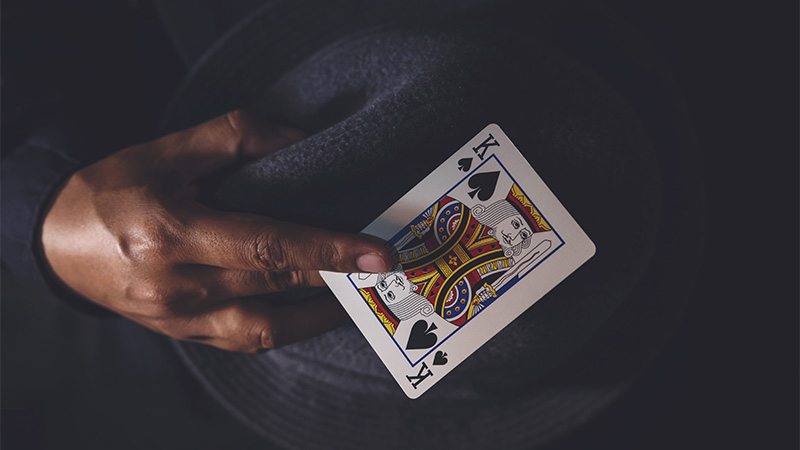
For this quintessential drinking game, you’ll need a deck of cards, a cup, and plenty of beer. The cup is placed in the middle of the players sitting around it. Players take turns picking a card from the deck, each of which requires a designated action. Here is the rundown:
Ace: Waterfall. Everyone drinks in a domino-effect pattern; the person who picked the card determines the duration of this group-chugging effort.
Two: You. The player who picks the card chooses a person to drink.
Three: Me. The player who picks the card takes a drink.
Four: Floor. The player who picks the card and everyone else playing has to immediately touch the floor. The last person to touch the floor drinks.
Five: Guys. Whoever identifies as a guy gets to drink.
Six: Chicks. Whoever identifies as a “chick” gets to drink.
Seven: Heaven. The player who picks the card puts their hands in the air, as do all other players; the last to do so drinks.
Eight: Pick a mate. The player picks a “mate” to drink with them for the rest of the game.
Nine: Bust a rhyme. The player picks a word, i.e., “beer,” and each player takes a turn saying a word that rhymes with that word, i.e., cheer, clear, near, fear, deer, you get the idea. This continues until a player can’t think of a word, and thus has to drink.
Ten: Categories. Similar to nine, but the person who draws the card picks a category, such as “wine regions,” after which each player says a region — Bordeaux, Chianti, Jerez, etc. — until someone can’t think of one. That person drinks.
Jack: Never have I ever. Player who picks the card says something they have never done, i.e., “Never have I ever drunk an Espresso Martini” Whoever has consumed an Espresso Martini has to drink.
Queen: Questions. The player who picked the card asks someone a question. Without answering, that person asks someone else a different question, and then they ask someone else, and so on. When a player answers a question or can’t think of another question to ask, they drink.
King: Make a rule. The player comes up with a rule to be applied to everyone for the rest of the game; i.e., players must drink using both hands; players must make a weird noise before they drink; etc. If anyone doesn’t follow this rule, they take another drink. This continues until the next player picks a king card and makes a new rule that must be followed until the next king is picked, and so on.
Circle of Death / Ring of Fire
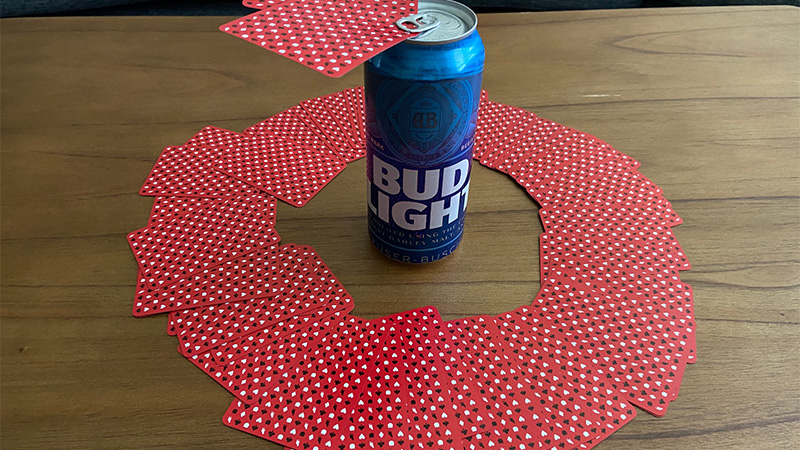
To set up Circle of Death, everyone sits in a circle with their drink. Pick a dealer. Players must refer to the dealer as the “dealer of death,” and if they call the dealer by any other name, they must drink for five seconds.
The game begins with the dealer of death distributing the cards clockwise and face up, starting with the player on their left. If a card dealt to a player matches a card on either side of it in number or suit, the card is “active.” All players with an active card must drink the amount of seconds matching the value of the card. The “dealer of death” is in charge of counting out the seconds as the cards go around. If the “dealer of death” is drinking, they can count the seconds by tapping the table. The game ends when all cards are pulled.
Another version of this game has a full beer in the middle of the circle and if any player breaks the circle when drawing their card, they must drinking the full beer.
Asshole / President

This lewd deck game is slightly more strategic. (Its predecessor is a Japanese game called Dai Hinmin, or “very poor man.”) You’ll need cards, beer, a cup for each player, and the titular “asshole” hat. A minimum of four players is ideal.
The aim of the game is for each player to get rid of their cards. All cards are ranked lowest to highest, starting with four. Ace is high. Two is a “clear” card, meaning if someone throws down a two, it clears the table and resets the round. Three is a wild card, meaning it can be any number except two. However, two threes can be played as one two, meaning it can clear the round.
Additionally, doubles or triples of any regular card exhibit a higher value than any regular card. For example, two fives is higher than a six, and three fives is higher than two kings. Four of any card can also clear the round.
In the first round, the dealer distributes all cards except the joker. The player with the four of clubs begins the game by placing that card in the middle.
Player two is whoever can produce a card higher than the first card placed in the middle. This continues until no one can produce a higher card. The first person to put all of their cards in the middle gets to be the president in the next round. The last person to get rid of their cards is the asshole, and they have to wear the asshole hat (often the cardboard beer case). The person who places second is the vice president.
In the next round, the president starts the second round by placing a card of their choosing in the middle. The president can first trade their worst cards for the asshole’s best cards. The president can also make the asshole drink at any time. The vice president can make any player drink except the president. The president should also never have to pour their own drink.
F*ck the Dealer
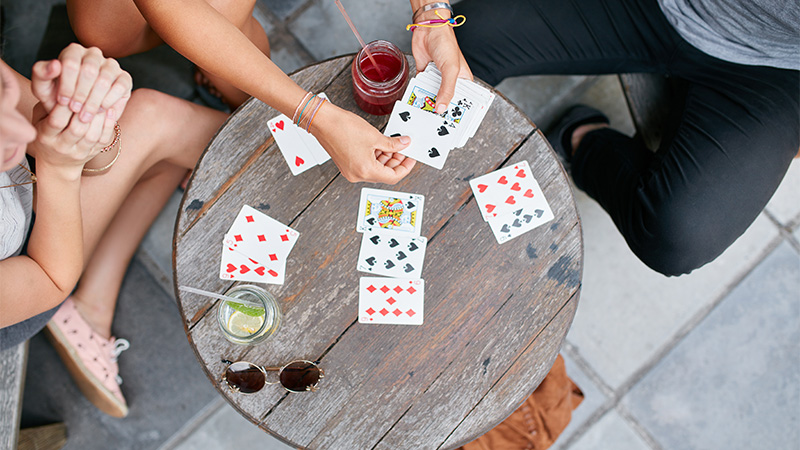
In F the Dealer, all players sit around a table with their drinks. Everyone is dealt one card. The player with the lowest card is the first dealer, and they collect all cards and shuffle the deck.
Next, the dealer asks the player to their left to guess the card on top of the deck. If the guess is correct, the dealer takes four sips. If the guess is wrong, the dealer tells the player “higher” or “lower,” and the player gets a second guess. If the guess is incorrect, the player drinks the difference of their guess and the card. In other words, if the card is a 10 and the guess was jack, the player takes one sip. If the guess is correct, the dealer moves on to the next player. This continues clockwise until the deck is out.
If three players in a row do not guess correctly on their first or second guesses, the dealer abdicates their duties. The player to their left becomes the new dealer.
Beeramid / Pyramid
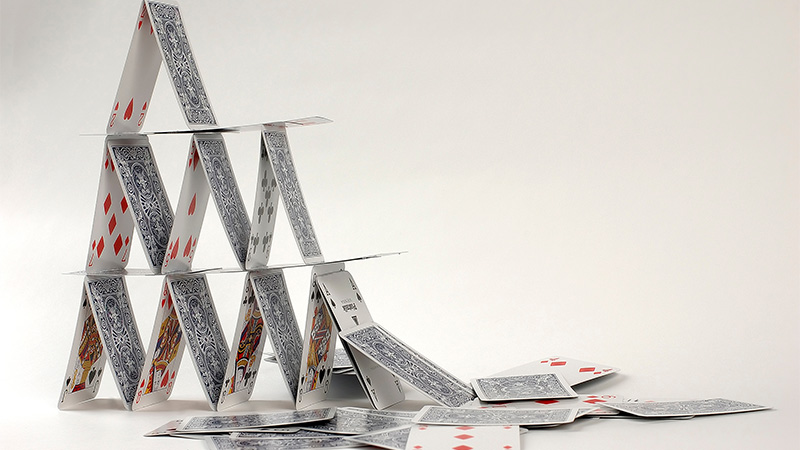
To play Beeramid, whoever is dealing makes a pyramid of cards face down on a table. The bottom row has seven cards, and the next has six, and so on, until you have one card on top (this should look like a pyramid, hence the name of the game).
The remaining cards are distributed evenly (or as evenly as possible) among the players. Each player has 10 seconds to look at and remember their cards, in the order they’re given.
The dealer turns over the first card of the pyramid, starting with the bottom row, and calls out the card. Any player who claims to have that card can tell another player to drink. The player who is told to drink (the “victim”) can either drink or call the other player’s bluff. In other words, the player who claimed to have that card may be lying. If the victim calls “bullshit,” the player must reveal the card in question. If the player doesn’t have the card, they drink twice. If the player does have the card, the victim drinks twice. And so on.
Of course, playing any old card game with a drink in hand works, too.
Ride the Bus
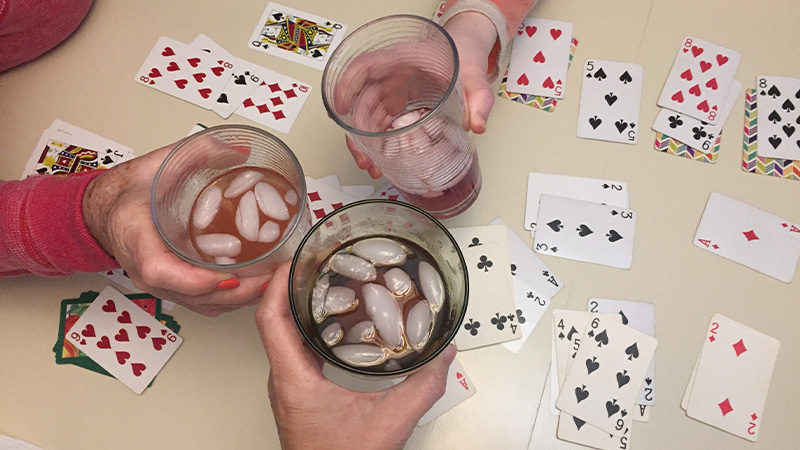
To ride the bus, first gather a group of at least five people.
The game is split into three rounds. One player is assigned the role of dealer. This individual shuffles the deck, lays it face down, and asks the player to their left, “red or black?” This player then has to guess if they think the card on the top of the pile will be red or black. If they are correct, they keep their card, and the dealer moves clockwise to the next person in the circle. If they are incorrect, they still keep their card but must take a drink before the dealer moves onto the next player. Once each player has a card, the dealer moves onto the next question in round one, asking the player to their left, “higher or lower?” The player then has to guess if they think the numerical value on the card topping the deck will be higher or lower than the value already in their possession. The same rules apply to this question — if the player is incorrect, they must drink before the dealer moves onto the next player.
With two cards in everyone’s possession, the dealer next asks the person to their left if they predict the numerical value of the deck’s top card will be in between or outside the values of the two cards in their hands. As in the first round, players with incorrect answers must drink. Once every player has three cards, the dealer asks the player to their left to guess the suit of the next card on top of the deck. The player must drink, again, if they are incorrect.
Once phase two is complete, all players assess their four cards. At the same time, the dealer lays cards out into the shape of a pyramid beginning with five cards on the bottom row, building up until one card sits on top. Each row of the pyramid corresponds with a given drink allotment — cards on the bottom row carry single drink allotments, cards on the second row are worth two drinks, and so on. The dealer begins by flipping over the first card in the bottom row. If any players have a corresponding card with the same value in their hands, they place their card down and assign a drink to any player of their choice. For cards in the second-fifth rows of the pyramid, the player with the corresponding card may assign all the drinks to the same person or distribute them among multiple players. Whoever has the most cards left in their hand after the final card is turned over must “ride the bus.”
“Riding the bus” involves the dealer laying out 10 cards, all face down, then flipping them over one by one. If the card is a numerical card, nothing happens and the next card is turned over. If the card is a face card — a jack, a queen, a king, or an ace — the player riding the bus must drink one, two, three, or four drinks, respectively.
Killer
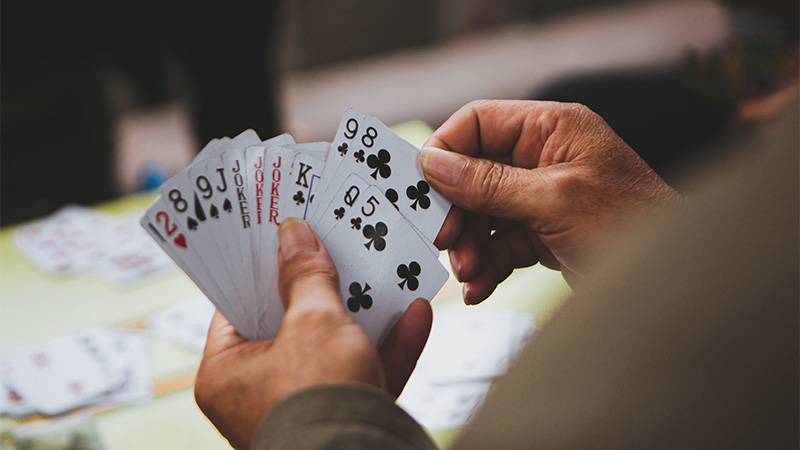
A game of deception, lying and secrecy are key to a good round of killer. To begin, all players must sit in a circle. Pull an equal number of cards for people, ensuring that all cards except for one are black. For example, if you have six players, pull five black cards and one red. All players then draw a card, keeping them hidden. Whoever draws the red card is the killer, and all other players are the detectives. For the detectives, the aim of the game is to catch the killer before they can “kill” the other players, while the killer’s aim is to kill every other player without getting caught.
The game begins in the detective phase. All players will talk among themselves to brainstorm who they believe the killer is. A player will then accuse a fellow player of being the killer. If they are correct, the killer is revealed and must drink an equal number of drinks as there are players still alive. If the accuser is incorrect, they must finish their drink.
From here, the game enters the killer phase. All players must close their eyes, with only the killer allowed to open theirs. The killer then taps one player on the shoulder, effectively “killing” the player. Once “dead,” this player must consume one drink for every player who is already dead. If they are the first to be killed, they need only take one drink.
The game then alternates between the detective phase and the killer phase, only ending when the killer has been rightfully accused, or when the killer has tapped all but one detective. If the detective wins, the killer must take an equal number of drinks as there are players still “alive.” If the killer wins, all detectives must drink five times.
Screw Your Neighbor
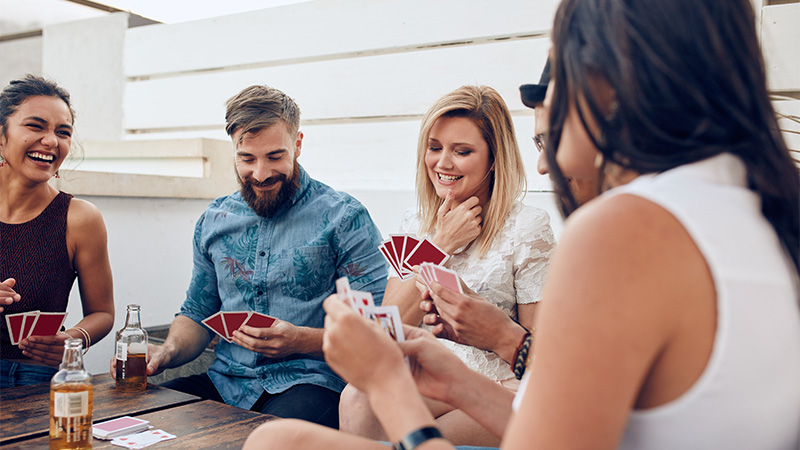
The objective of screw your neighbor is to have the lowest possible card value in your hand at the end of the game. To do so, players have the opportunity to, well, screw their neighbors. Note that in screw your neighbor, aces are played low.
To begin, all players sit in a circle and are granted three lives. Each player then draws a card from the deck. The player with the highest card then becomes the dealer, who reshuffles the deck and passes one card to each player in the circle. The person sitting to the left of the dealer can either choose to keep the card they have in their possession or swap cards with the person sitting to their left. The same process continues around the circle until it is the dealer’s turn. All switches made are permanent and cannot be changed, and no card can be swapped with a king. On their turn, dealers can either keep their card or select a card from the top of the shuffled deck. When they’ve completed their turn, all cards are turned over, and the player with the lowest card then loses a life. The game repeats until only one player is left standing.
Risk It or Drink It
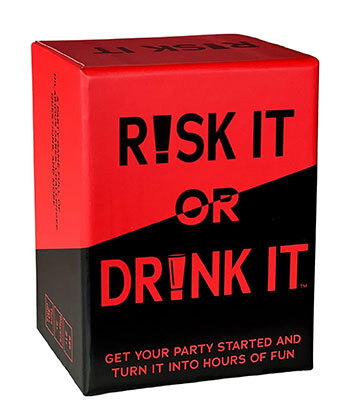
While not a game you can play with a deck of cards as it comes with a deck of its own, Risk It or Drink It is intended for large groups of people and designed to get each member of the group out of their comfort zone and test their limits.
To play, four types of cards are shuffled together: white cards, which will get you tipsy, green cards which will challenge you, black cards which will make you either answer questions or act out a dare, and red cards, which test your limits.
The shuffled cards are placed face down in the middle of the group before players take turns drawing from the pile. Each card drawn must be read aloud, and the individual must carry out the action written on the card. If they fail to complete the action in time, or if a dare card is drawn that a player chooses to opt out of, they must drink. Every card in the desk has a designated point value ranging from 0 to 3 with each completed action earning players points. The first to 10 points wins the game.
Party Starter
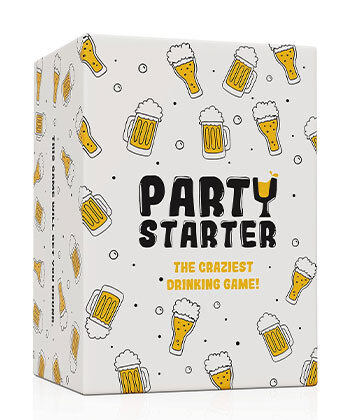
With over 150 unique cards, Party Starter is a great option for kicking off a night with a medium to large sized group. Cards are divided into five categories — Never Have I Ever, Truth or Drink, Most Likely To, Everyone Who…, and Let’s Compete. The cards are all shuffled together and placed in the middle of the group before players take turns drawing, moving in a clockwise rotation, responding to the directions laid out on their card.
While there is no official point system, with questions like “Truth or Drink: Name the worst character trait of the person sitting next to you,” it’s safe to say the game can get the drinks flowing.
